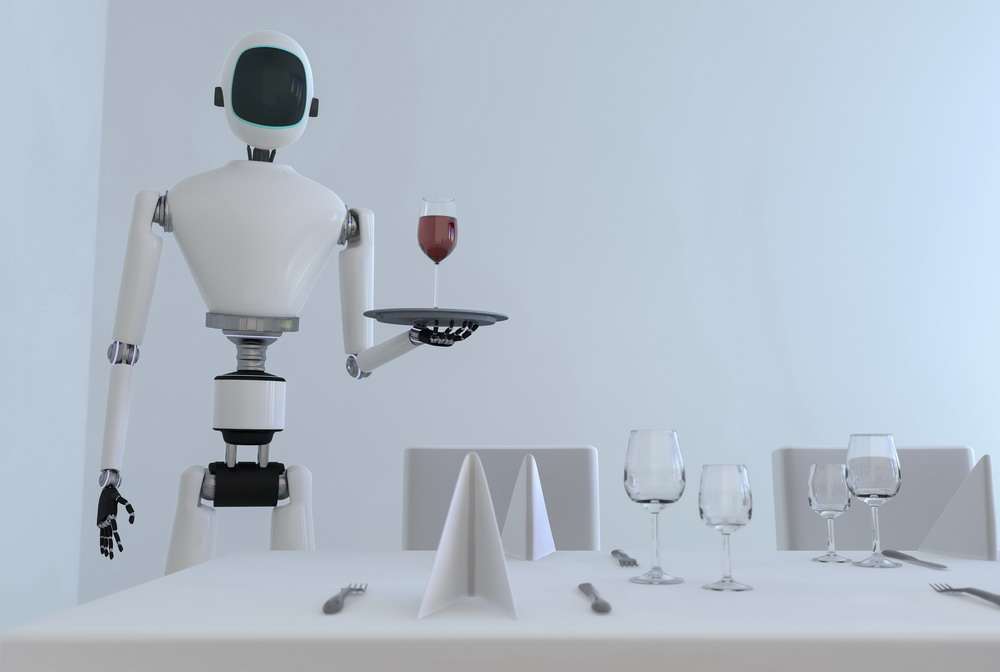Run a Google search on smart home devices and you will have 2.7 billion results to look at. Despite home automation not being as ubiquitous as some companies would like, smart home information is. Everywhere you look you will find news articles, product reviews, and videos talking about smart home technology.
That leads us to a 2015 Fox News article written by contributor John Brandon. The article touched on what the future of smart technology would look like. It predicted everything from cryptocurrency replacing fiat to each of us having robots tasked with protecting us. Science has a lot of catching up to do if Brandon’s predictions are to come to fruition.
Nonetheless, the article does raise an interesting question: Will today’s smart home gadgets be tomorrow’s robots? There is plenty of optimism in this particular area of science. We have already seen a lot of progress in robotics since the turn-of-the-century. It is quite possible that we will live in a world filled with robots within the next 25 to 50 years.
Home Automation’s Current State
Bringing robots into the home is something that used to be relegated to science fiction and children’s cartoons. And yet, here we are today with robotic vacuums and lawnmowers. You can buy a robotic pool vacuum that keeps your pool clean year-round. And of course, there are all sorts of smart home gadgets capable of doing amazing things.
Vivint, a Salt Lake City company that is considered a pioneer in home automation, explains what they do at integrating heating and air-conditioning, appliances, security devices, and other systems managed by a centralized control panel. It is a workable definition that would apply to almost all home automation systems.
A fully integrated system could automate just about anything that is normally operated electronically. You might start with the smart thermostat and then add sensors and software to control lighting. Then you would automate your smart windows or window blinds, your home entertainment system, and so forth.
Much of the technology we need to create truly smart homes is already available. So why are smart homes not the norm? There are a couple of reasons, beginning with compatibility. Vivint is just one of many companies working in the smartphone arena. Unfortunately, proprietary hardware and software makes it very difficult for unrelated systems to work together. This lack of compatibility is depressing the market.
The Future of Home Automation
For today’s home automation gadgets to become tomorrow’s robots, something profound has to happen: hardware and software makers have to come to agreement on some sort of standardization. That is when things will really take off. When your automated lights can talk to your voice assistant, and both can talk to your vacuum cleaner and lawn mower, you’ll have a system capable of accommodating many more robots than we currently utilize.
The future of home automation looks pretty good by all measurements. The more we come to know about deep learning and artificial intelligence, the more we are applying that science to home automation. Today’s a smart vacuum cleaner could become tomorrow’s smart dishwasher. Both could give way to a robotic maid capable of cooking dinner and cleaning up after itself.
If you are worried about robots taking over the world, don’t be. The future looks a lot more like the robots from Star Wars than their evil counterparts from The Terminator and I, Robot. They will be advanced enough to operate on their own but not so advanced as to be capable of rational, abstract thought.
A Taste of the Future Today
For those of us who love smart home technology, it represents an opportunity to get a taste of the future today. For example, did you know you can install both smart thermostats and lighting systems capable of ‘learning’ your regular schedule? It’s true. And as they do so, the systems can self-adjust to accommodate your lifestyle. A good system can save you quite a bit of money by adjusting both lighting and temperature so that you are not wasting energy unnecessarily.
Will today’s smart home gadgets become tomorrow’s robots? It’s possible. But don’t expect an entire robot population capable of taking over the world. It will not be like that.
